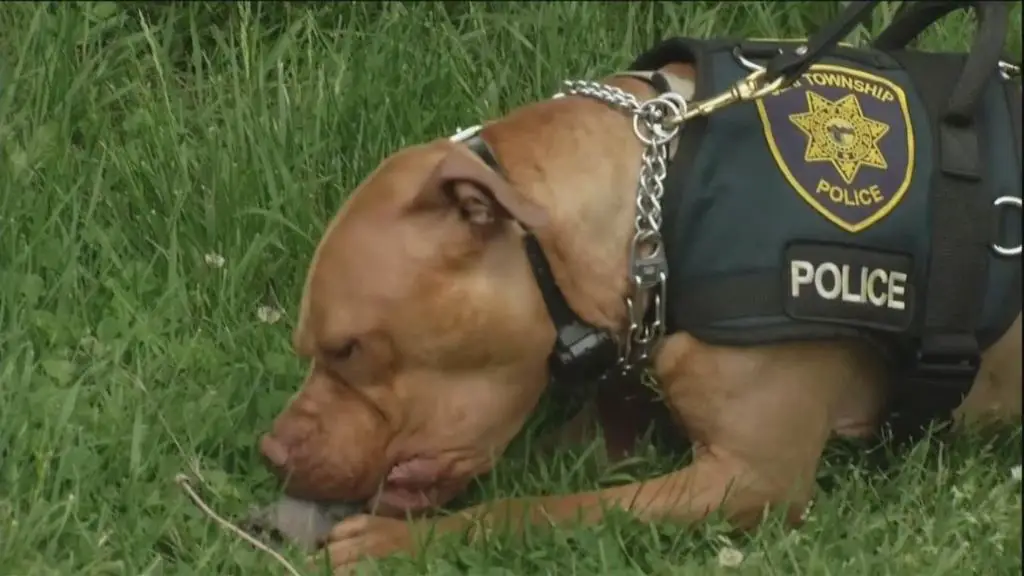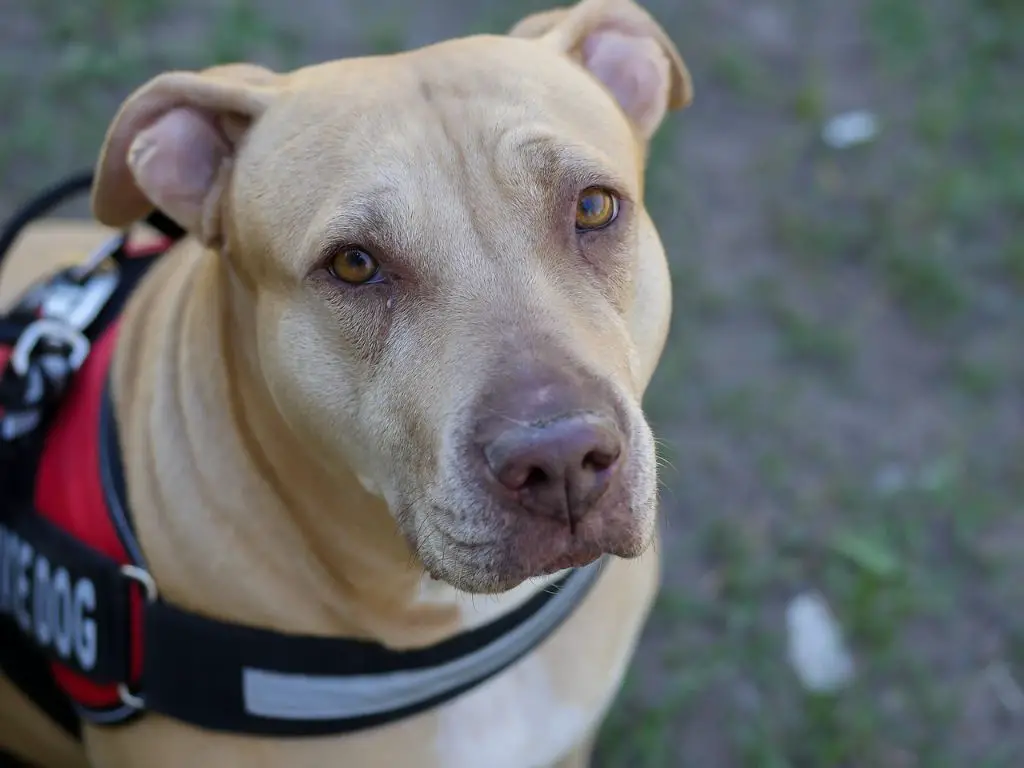Introduction
Dogs have a long history of being used for fighting and combat purposes. Certain breeds were selectively bred for their aggression, strength, and tenacity to produce dogs that would excel in these violent bloodsports. While dog fighting has been outlawed in most developed countries today, some breeds still carry their legacy as fighting dogs in their genes and reputation. This content will take a closer look at one particular breed that became infamous for its fighting abilities – the American Pit Bull Terrier.
Origins of the Pit Bull
The history of the pit bull breed can be traced back to England in the 1800s, when bull baiting and dog fighting were popular blood sports. Bull baiting involved tethering a bull and setting dogs on it, while dog fighting pitted dogs against each other in a fighting pit or ring. Pit bulls were originally bred from crosses between bulldogs and terriers to combine the strength and courage of the bulldog with the agility and tenacity of the terrier. The specific ancestors of pit bulls are believed to include the Old English Bulldog, the English Terrier, and the Black and Tan Terrier.
The purpose was to develop a muscular, powerful, and agile dog that would excel at bull baiting and dog fighting. This ASPCA article notes that pit bull-type dogs were bred not to be aggressive to people, so handlers could control them during fights. Their loyalty and training made them good fighters and companions.
When bull baiting was banned in England in 1835, dog fighting emerged as a popular replacement. Pit bulls were the breed of choice for dog fighting due to their strength, athleticism and reputation for not biting people. Many early bloodlines, such as Colby pit bulls, were carefully bred for these desired traits over generations. Dog fighting eventually spread to America along with immigrants who brought their pit bulls with them.

Anatomy of a Fighting Dog
Pit bulls possess certain physical and mental traits that historically made them well-suited for dog fighting. Their stout, muscular build gives them incredible strength and stamina. Pit bulls have a large head and powerful jaws that allow them to inflict significant damage when they bite down. They have a very high pain tolerance and seem relatively unaffected by injuries that would incapacitate other dogs. Pit bulls are also known for their “gameness” – a fierce determination to persevere even when exhausted. This mental trait caused them to continue fighting with relentless intensity, even in the face of serious wounds.
According to an article on Facebook, “The early 1980s find the media continuously churning out emotionally charged articles about Pit bull anatomy and behaviors that were based on rumors, myths and misinformation.” Pit bulls – the making of the myth. Their physical attributes and mental drive made them the breed of choice for the cruel bloodsport of dog fighting.
Arrival in America
Pit bulls first came to America with immigrants from England in the mid-19th century. The ancestors of the breed were originally used as working dogs and farm dogs, appreciated for their strength, loyalty and intelligence. However, once in America, pit bulls continued to be used in the cruel practice of dog fighting for “entertainment”.
Dog fighting gained popularity in America in the late 1800s. Events were held across the country where dogs were made to fight each other, often to the death. Pit bulls were the breed of choice due to their athleticism, stamina and fierce tenacity once engaged in battle. America’s rapid urbanization and industrialization created a market for dog fight spectating and gambling, leading to the continued import and breeding of pit bulls for fighting purposes (source).
Dog Fighting Today
Dog fighting remains an ongoing issue in the United States today. According to the Humanes Society, dog fighting is believed to be on the decline over the past decade due to increased awareness and stronger legal penalties. However, it still persists as an underground activity, especially in urban areas or where poverty and drugs are prevalent. Dog fighting operations and networks can be found across the country, but hot spots include Texas, the Midwest, and along the East Coast.
All 50 states have now passed felony penalties for dog fighting. The federal Animal Welfare Act was also amended in 2007 to prohibit the interstate commerce of dogs for fighting purposes. However, animal welfare groups caution that enforcement remains inconsistent. Fights will take place in basements, garages, empty warehouses, back alleys, and other secreted locations. The fights are dangerous, gruesome, and often operated by other criminal networks involved in drugs, arms dealing, and gambling.
To crack down on dog fighting, law enforcement has created specialized task forces and units to infiltrate dog fighting rings. Education and public awareness campaigns also aim to curb the cruel practice. But as long as certain groups continue to breed and train dogs aggressively for profit, dog fighting networks will likely persist as an underground activity even as the practice faces widespread opposition today.

Misconceptions
Many people believe that pit bulls are inherently dangerous and aggressive dogs due to myths and misinformation. However, the truth is that pit bulls do not have special “locking jaws” and are not genetically predisposed to be aggressive compared to other breeds. Rather, a dog’s behavior depends on how it is raised, trained, and socialized.
One common myth is that pit bulls have abnormally strong bites or jaws that “lock” onto prey and refuse to let go. However, studies show pit bulls have a bite strength proportional to their body size and their jaws are designed just like any other dog breed (The Human Society). They also do not bite any differently or more forcefully.
Another misconception is that pit bulls are inherently aggressive and dangerous. While pit bulls were historically bred for dog fighting, animal aggression is not “hard wired” in their genes. With proper socialization and responsible ownership, pit bulls are not more likely to bite or attack humans than other breeds (The Human Society). Any dog can become aggressive or dangerous without proper training.
In general, breed-specific laws or bans that target pit bulls as a dangerous breed often rely on inaccurate stereotypes. Responsible ownership, training, and socialization are much bigger factors in a dog’s temperament and behavior compared to its breed.
Positive Uses
Despite their controversial fighting history, pit bulls have many positive uses today as therapy dogs, search and rescue dogs, and more. Pit bull breeds like the American Staffordshire Terrier make excellent therapy dogs due to their affectionate nature and ability to form strong bonds with humans (https://animalfoundation.com/whats-going-on/blog/pit-bulls-therapy-dogs). With proper socialization and training starting from puppyhood, pit bulls can become registered therapy dogs that provide comfort and affection to people in hospitals, nursing homes, schools, and more. Some organizations like the ASPCA use pit bulls as therapy animals to improve public perception of the breed.

Pit bulls also make capable search and rescue dogs, using their athleticism and determination to locate missing persons. Their strength allows them to maneuver through debris, and their drive enables them to work long hours under stressful conditions (https://www.servicedogcertifications.org/pitbull-therapy-dog-emotional-support/). Some pit bulls have been donated to police departments to serve on K-9 units, detecting drugs or explosives and assisting in other police work. While Labrador Retrievers and German Shepherds are still most common for these roles, well-trained pit bulls demonstrate that the breed has more versatility than their unfair reputation suggests.
Adoption and Ownership
Adopting a pit bull can be incredibly rewarding, but it’s important to make sure you’re prepared for the commitment. Many pit bulls in shelters have unknown histories, so it’s critical to invest time in proper training and socialization. The Adopt A Pit Rescue recommends assessing your lifestyle, home environment, and ability to train a strong, energetic dog before adopting.
When adopting a pit bull, meet the dog first to evaluate temperament. Ask shelters about medical history, past living conditions, and reactions to people and other animals. Be realistic about challenges like separation anxiety or reactivity on leashes or with strangers. Prepare to hire a professional trainer if needed. Well-socialized, obedient pit bulls can be model canine citizens.
Be a responsible owner by properly containing your pit bull when outside, walking on a non-retractable leash, and always supervising interactions with children. Pit bulls require daily exercise and mental stimulation like training, food puzzles, and play. Spaying/neutering helps curb aggression issues. With dedicated training, socialization, and care, rescue pit bulls can thrive in loving forever homes.
Breed Bans
Breed-specific legislation (BSL) refers to laws that ban or restrict certain dog breeds, often targeting pit bulls. Many major cities and towns have enacted BSL banning pit bulls, including Denver, Miami, and Cincinnati (ASPCA). Proponents argue such bans will reduce dog bites and attacks, but critics argue they are ineffective and unfairly target responsible owners.
BSL emerged in the 1980s in response to a reported rise in serious and fatal dog attacks, often involving pit bulls and Rottweilers. Lawmakers hoped banning these breeds would improve public safety. However, most experts argue BSL fails to reduce dog bites and does not address the underlying factors leading to aggression, like lack of training and socialization, irresponsible ownership, or unsanitary conditions (Vox). Banning specific breeds also fails to account for human bias in identifying breeds visually.

Additionally, BSL has faced heavy criticism for punishing responsible owners and dogs with no history of aggression. Critics argue policies should focus on individual dogs’ behaviors, not making assumptions based on breed. Several studies show banning breeds has little effect on bite rates. For example, dog bites in the UK increased by 50% after enacting BSL in 1991 (AVMA). Many experts advocate for breed-neutral dangerous dog laws instead. While controversial, most scientific evidence suggests BSL is an ineffective policy that unfairly targets dog breeds and owners.
Conclusion
Throughout history, the Pit Bull was selectively bred as a fighting dog. Their strength, athleticism, and determination made them prized in the brutal sport of dog fighting. However, this troubling past does not define the breed. With proper training and socialization, Pit Bulls can make wonderful companion animals. Their affectionate and people-pleasing nature has won over many fans of the breed. While some continue to ban Pit Bulls, education on proper care and training can go a long way towards improving public perception. Despite their unfortunate origins, Pit Bulls have the capacity for rehabilitation and a chance at a happy life as beloved family pets.
